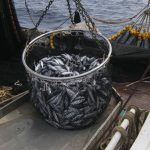The project, led by Seafood Scotland (SFS) and funded by FSA (Scotland), Scottish Government, Scottish Fishermen’s Trust and Seafish, will run a 4-month pilot scheme in Scotland at end of July, to coincide with the main scallop fishing season. It is said that the pilot project is going to use a web-based system developed by AM Seafoods Ltd that employs a map to display designated fishing boxes, with the accompanying bio-toxin results in traffic light colours according to status.
It has been said that the project will generate awareness of the database development and become the main block for a UK-wide scheme for the entire scallop sector. SFS CEO Libby Woodhatch informed that the hygiene regulations require that all food business operators meet specified standards, through a system of own checks to ensure product safety.
She also said that the check include risk assessments and end product testing for marine biotoxins. According to her the responsibility for providing safe shellfish lies with the entire supply chain from fisherman or grower, through to those selling the product to the consumer. The main aim of the project is to determine whether the pooling of industry biotoxin test results is a viable means of reducing the risk of contaminated product reaching the consumer, by helping fishermen avoid areas where biotoxins may be present.
Libby Woodhatch told that the development of the new database is an exciting project and one that we hope industry will fully support.








